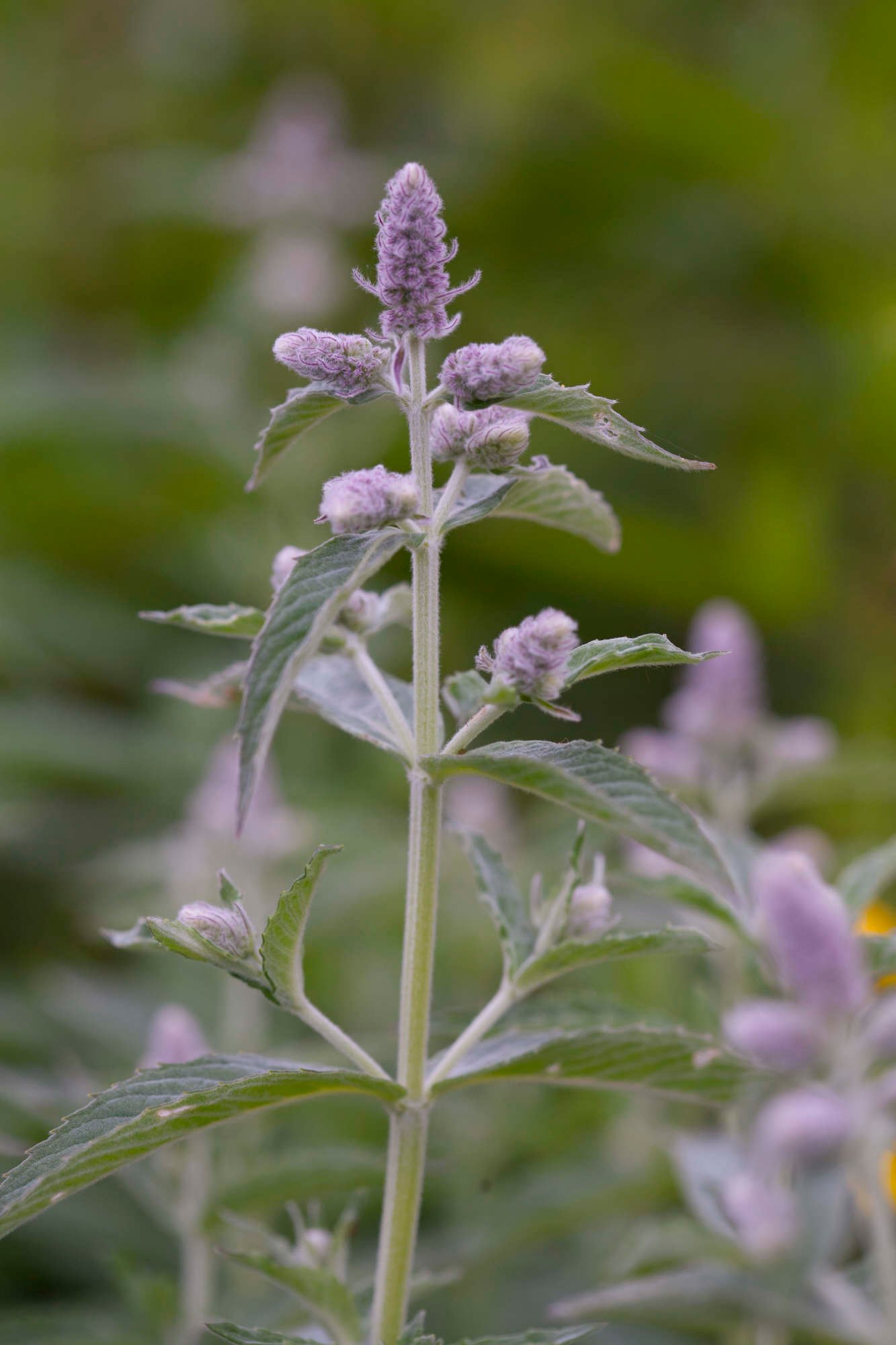Mentha longifolia
horse mint
A spreading perennial, to 1.2m, with hairy, green to grey-green leaves with a musty, minty smell. Branched, tapering spires of tiny, pale purple or white flowers are produced in mid- to late summer
Synonyms
Mentha sylvestris L.Size
Ultimate height
1–1.5 metresTime to ultimate height
2–5 yearsUltimate spread
1–1.5 metresGrowing conditions
Moisture
Moist but well–drained, Poorly–drainedpH
Acid, Alkaline, NeutralColour & scent
| Stem | Flower | Foliage | Fruit | |
| Spring | Green Grey Silver | |||
|---|---|---|---|---|
| Summer | Purple White | Green Grey Silver | ||
| Autumn | Green Grey Silver | |||
| Winter |
Position
- Full sun
- Partial shade
Aspect
North–facing or West–facing or South–facing or East–facing
Exposure
Exposed or Sheltered Hardiness
H7Botanical details
- Family
- Lamiaceae
- Native to GB / Ireland
- No
- Foliage
- Deciduous
- Habit
- Suckering
- Genus
Mentha are aromatic, rhizomatous perennials with opposite, toothed leaves and small tubular flowers in spikes of whorls in summer
- Name status
Correct
- Plant range
- Europe, N Africa, SW Asia
How to grow
Cultivation
Grow in moist but well drained soil in full or partial sun. May have to potential to become a nuisance; restrict the root run in a deep container and plunge into the ground, or plant in a well chosen site where it can grow unrestricted. See mint cultivation for more information
Propagation
Propagate by seed or division in spring or autumn
Suggested planting locations and garden types
- Cottage and informal garden
- Wildlife gardens
Pruning
Cut back after flowering
Pests
May be susceptible to caterpillars, cuckoo spit (froghoppers) and mint beetle
Diseases
May be susceptible to powdery mildews and mint rust
Get involved
The Royal Horticultural Society is the UK’s leading gardening charity. We aim to enrich everyone’s life through plants, and make the UK a greener and more beautiful place.
